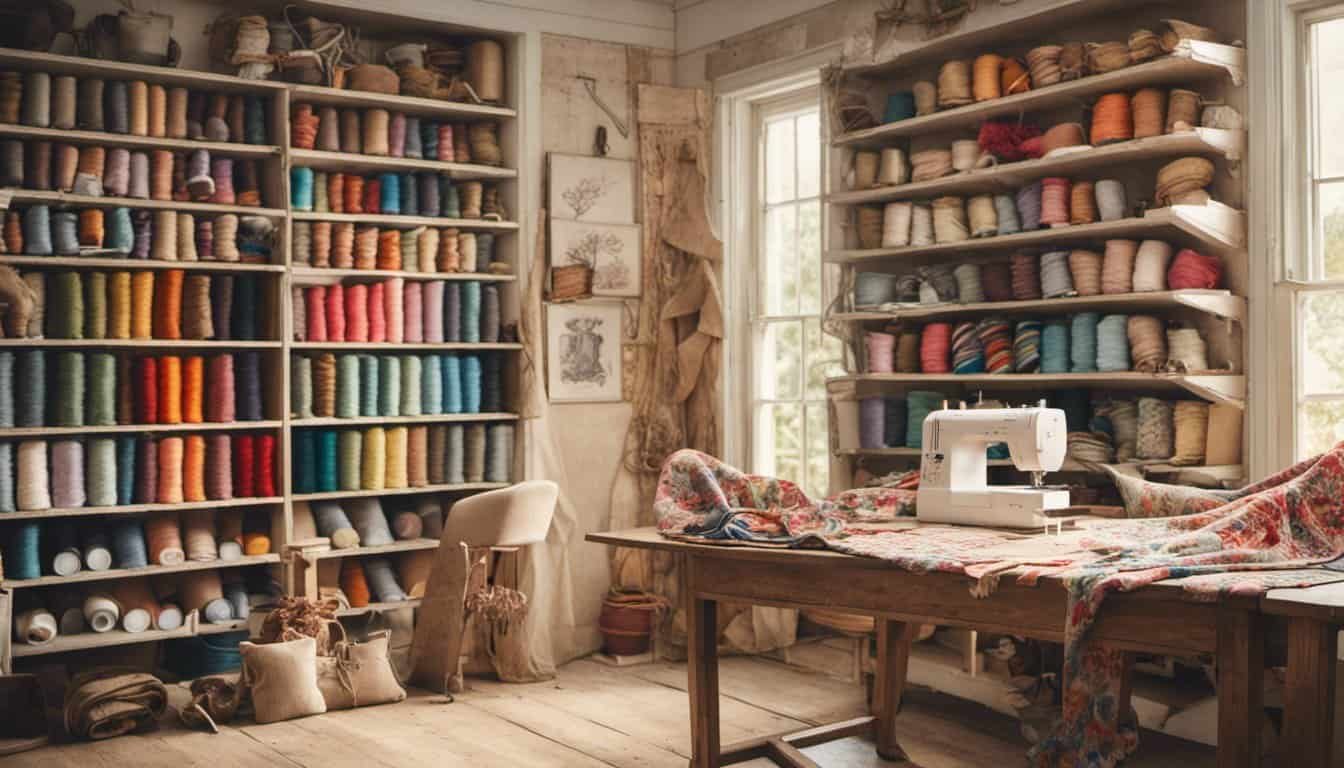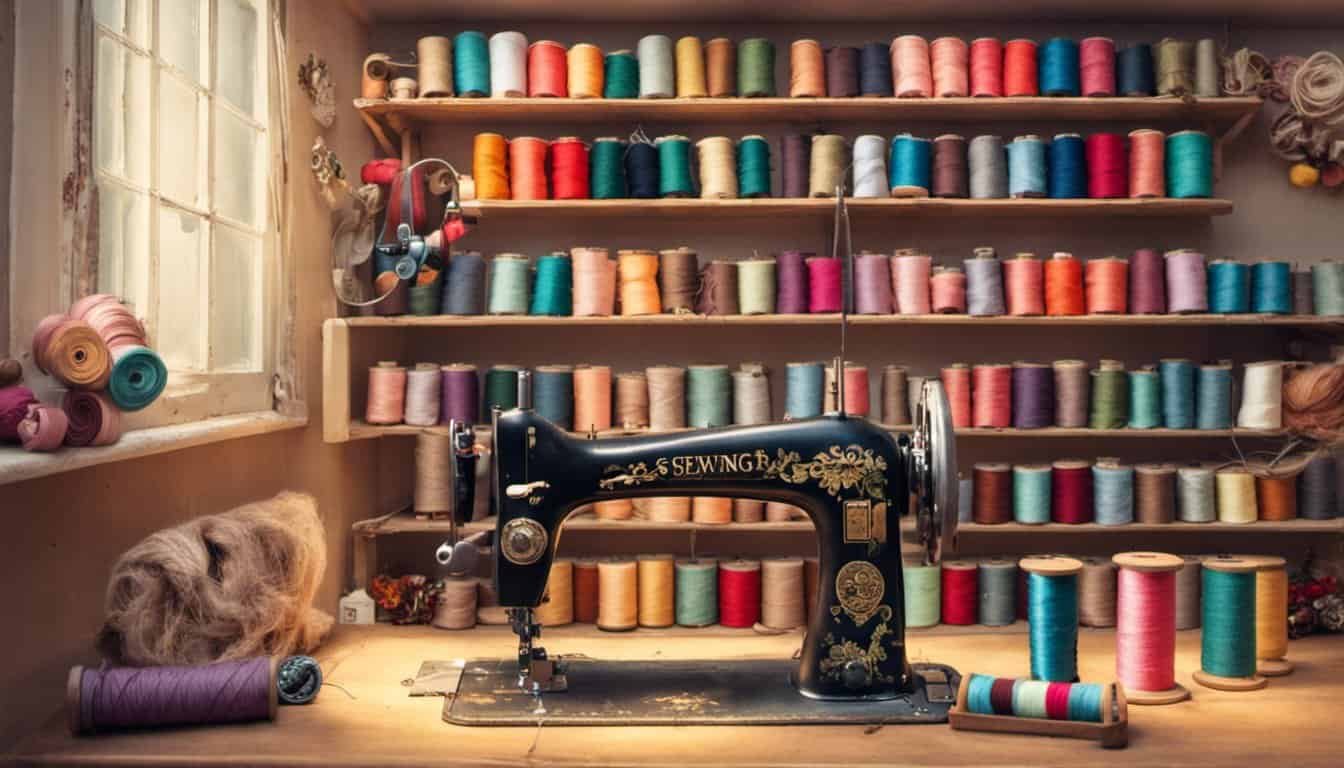Are you excited to create something beautiful while helping the planet? Sewing with recycled fabrics is a fantastic way to reduce waste and unleash your creativity. Whether you’re crafting trendy accessories or cozy home decor, using recycled materials can make your projects unique and eco-friendly.
Imagine turning old jeans into a stylish tote or transforming leftover linens into vibrant quilts. Not only do you give new life to forgotten fabrics, but you also contribute to a more sustainable world. With a few simple tips and a bit of inspiration, you’ll be ready to embark on your eco sewing journey and make a positive impact one stitch at a time.
Benefits Of Sewing Recycled Fabrics
Sewing recycled fabrics offers multiple advantages that benefit both you and the environment. Here are some key benefits:
Environmental Impact
Reducing waste is a primary benefit of using recycled fabrics. By repurposing materials like old jeans and linens, you help decrease the amount of textile waste that ends up in landfills. According to the Environmental Protection Agency (EPA), textiles account for approximately 5% of total landfill waste in the United States.
Cost-Effectiveness
Using recycled fabrics can lower your project costs. Instead of purchasing new materials, you can utilize fabrics you already own. This approach not only saves money but also maximizes the use of resources you already have.
Creativity and Uniqueness
Recycled fabrics provide a unique palette for your projects. Combining different textures, colors, and patterns from various sources allows you to create one-of-a-kind items. This uniqueness adds a personal touch to your crafts, setting them apart from mass-produced products.
Supporting Sustainability
Sewing with recycled fabrics contributes to sustainability by reducing the demand for new fabric production. This reduction lowers the environmental footprint associated with manufacturing processes, including water usage and carbon emissions. Sustainable practices help preserve natural resources for future generations.
Preservation of Resources
Repurposing existing materials minimizes the need for new resources. This conservation effort supports a circular economy, where materials are reused and recycled rather than discarded. By participating in this cycle, you play a role in maintaining resource availability and reducing environmental strain.
Health Benefits
Choosing recycled fabrics often means selecting materials that have been previously used and washed, reducing the need for harsh chemicals used in new fabric production. This choice can lead to healthier living environments, especially for those with sensitivities to certain chemicals.
Economic Benefits
Supporting the use of recycled fabrics can stimulate local economies. By sourcing materials from local donations or second-hand stores, you contribute to community sustainability initiatives and support small businesses.
Summary of Benefits
| Benefit | Description |
|---|---|
| Environmental Impact | Reduces textile waste and landfill usage |
| Cost-Effectiveness | Lowers project costs by utilizing existing materials |
| Creativity and Uniqueness | Enables the creation of one-of-a-kind, personalized items |
| Supporting Sustainability | Decreases demand for new fabric production, lowering environmental footprint |
| Preservation of Resources | Minimizes need for new resources, supporting a circular economy |
| Health Benefits | Reduces exposure to harsh chemicals used in new fabric production |
| Economic Benefits | Stimulates local economies and supports community sustainability initiatives |
By embracing recycled fabrics in your sewing projects, you not only enhance your crafting experience but also contribute positively to environmental and economic sustainability.
Choosing The Right Recycled Fabrics
Selecting the appropriate recycled fabric sets the foundation for successful eco-friendly projects. Consider the fabric type and its condition to ensure your project’s durability and aesthetic appeal.
Types Of Recycled Fabrics
- Cotton: Soft, breathable, and versatile, ideal for garments and home textiles like pillowcases and tote bags.
- Denim: Sturdy and durable, perfect for jeans repurposing, jackets, and accessories such as bags and wallets.
- Linens: Lightweight and strong, suitable for quilts, table linens, and curtains.
- Wool: Warm and resilient, excellent for blankets, scarves, and sweaters.
- Synthetic Blends: Resistant to wrinkles and stains, useful for upholstery, activewear, and outdoor gear.
- Silk: Smooth and luxurious, great for scarves, blouses, and delicate garments.
- Upcycled Fabrics: Mixed materials or creatively transformed textiles, ideal for unique, one-of-a-kind projects.
Where To Find Recycled Materials
- Thrift Stores: Offer a wide range of pre-loved garments and textiles at affordable prices.
- Online Marketplaces: Platforms like eBay, Etsy, and Facebook Marketplace provide diverse options for recycled fabrics.
- Fabric Recycling Programs: Local initiatives and nonprofit organizations collect and distribute used fabrics for crafting.
- Clothing Swaps: Community events where you can exchange unwanted clothes for materials suitable for your projects.
- Salvage Yards: Source larger fabric pieces from discarded furniture or building materials.
- Household Cleanouts: Repurpose textiles from unused items in your home, such as old curtains, bedsheets, and towels.
- Eco-Friendly Stores: Retailers specializing in sustainable and recycled materials offer curated selections for various projects.
Preparing Fabrics For Sewing
Proper preparation readies your recycled fabrics for successful sewing projects. Follow these steps to ensure optimal results.
Cleaning And Treating Recycled Fabrics
Ensure fabrics are clean to maintain project quality.

Wash fabrics using a mild detergent at 30°C to eliminate dirt and odors.
Treat stains with a pre-wash stain remover before laundering.
Iron fabrics on the appropriate setting to remove wrinkles, facilitating precise cutting.
Inspect fabrics for damage, removing holes or frayed edges to prevent future issues.
Cutting And Measuring Techniques
Accurate cutting maximizes fabric usage and minimizes waste.
« You Won’t Believe How Easy It Is to Sew Blankets for Charity Donations
You Won’t Believe These Sewing as Art: Historical Examples »
Measure fabrics twice before cutting to ensure precision.
Use sharp scissors or a rotary cutter for clean edges on recycled materials.
Apply pattern weights instead of pins to avoid fabric distortion.
Mark patterns with chalk or fabric pens, allowing easy removal before sewing.
Arrange pattern pieces efficiently on the fabric layout to optimize material use.

Essential Tools And Supplies
To sew recycled fabrics effectively, gather these essential tools and supplies:
Sewing Machine
A reliable sewing machine handles various fabric types. It features adjustable tension and multiple stitch options for different textures.
Scissors and Cutting Tools
Sharp fabric scissors provide clean edges. Include rotary cutters and cutting mats for precise measurements and efficient cutting of recycled materials.
Measuring Tools
Accurate measurements prevent fabric waste. Use a flexible tape measure, clear ruler, and tailor’s chalk to mark and measure fabric accurately.
Pins and Needles
Quality pins secure fabric layers. Needles suitable for multiple fabric types ensure smooth stitching and prevent snags on recycled materials.

Thread
Strong, durable thread matches fabric types. Choose polyester or cotton threads to ensure longevity and color consistency with your recycled fabrics.
Iron and Ironing Board
Press fabrics to remove wrinkles. An iron with adjustable temperature settings maintains fabric integrity during preparation and sewing.
Pattern Paper
Organized patterns guide cutting and assembly. Use pattern paper or tracing paper to create and adjust patterns for different projects.
Sewing Machine Accessories
Enhance your sewing experience with essential accessories. Include seam rippers, bobbins, and presser feet tailored for various fabric types and project needs.
Storage Solutions
Organize your tools and materials effectively. Use storage boxes, organizers, and labels to keep your workspace efficient and clutter-free.

Step-By-Step Sewing Process
Follow these steps to sew your recycled fabrics into stunning eco-friendly projects.
Setting Up Your Workspace
Organize your sewing area for efficiency. Clear a spacious table to lay out fabrics and tools. Ensure good lighting to see details clearly. Arrange your sewing machine, scissors, and other essentials within easy reach. Use storage solutions to keep materials sorted and accessible. Maintain a clean workspace to prevent fabric damage and streamline your workflow.
Stitching Techniques For Recycled Fabrics
Choose appropriate stitches to handle varied fabric textures. Use a straight stitch for seams on cotton and denim fabrics. Opt for a zigzag stitch on stretchy materials like synthetic blends to allow flexibility. Reinforce edges with a backstitch to prevent fraying on linen and wool. Apply topstitching for added strength and decoration on heavy fabrics. Utilize a walking foot attachment for multi-layered or slippery recycled fabrics to ensure even stitching.
Finishing Touches And Sustainability Tips
Quality Control
Inspect your project thoroughly. Check all seams for strength and evenness. Trim any excess threads to prevent fraying. Ensure closures like buttons and zippers are securely attached. This step guarantees your item lasts longer, reducing the need for replacements.
Eco-friendly Finishing Techniques
Choose sustainable methods for finalizing your projects. Use natural dyes instead of synthetic ones to minimize chemical use. Opt for organic or recycled trims, such as buttons made from wood or recycled plastic. Applying fabric-friendly finishes like beeswax can enhance durability without harmful effects.

Sustainable Packaging
Present your creations responsibly. Use recycled or biodegradable packaging materials like kraft paper or reusable fabric bags. Avoid single-use plastics to reduce environmental impact. Label your products with eco-friendly inks to maintain sustainability throughout.
Caring for Your Eco Projects
Provide care instructions to extend the life of your items. Recommend washing with mild, eco-friendly detergents. Suggest air drying instead of using energy-intensive dryers. Proper maintenance ensures your projects remain functional and stylish for years.
Recycling Scraps
Minimize waste by repurposing leftover fabric pieces. Create patchwork designs, accessories, or cleaning cloths from scraps. Donate excess materials to local artists or community centers. This practice supports a circular economy and maximizes material usage.
Energy-efficient Practices
Implement energy-saving techniques in your sewing routine. Turn off and unplug machines when not in use. Use energy-efficient lighting in your workspace. These habits reduce your carbon footprint and promote a greener crafting environment.
Supporting Local Suppliers
Source materials locally to decrease transportation emissions. Purchase from local thrift stores, fabric swaps, or eco-friendly shops. Supporting nearby businesses strengthens the community and reduces environmental impact.

Reducing Chemical Use
Limit the use of harsh chemicals in your projects. Choose water-based dyes and non-toxic glues. Ventilate your workspace to avoid inhaling fumes. These choices contribute to a healthier environment and safer crafting practices.
Educating Others
Share your sustainability journey with fellow crafters. Host workshops on eco-friendly sewing techniques. Write blog posts or create tutorials highlighting sustainable practices. Educating others amplifies your impact and fosters a community committed to environmental responsibility.
Continuous Improvement
Stay informed about sustainable sewing advancements. Experiment with new eco-friendly materials and methods. Regularly assess your crafting practices to identify areas for improvement. Commitment to ongoing learning enhances both your skills and sustainability efforts.
Conclusion
Sewing with recycled fabrics is a rewarding way to express your creativity while making a positive impact. Each project you complete showcases your unique style and contributes to a healthier planet. Embrace the journey and enjoy turning forgotten materials into something beautiful. Your efforts make a difference and inspire others to join the eco-friendly crafting movement. Keep experimenting and have fun with your sustainable sewing adventures.


















